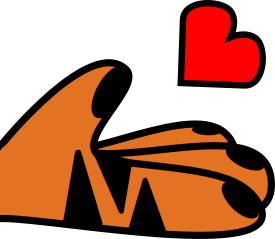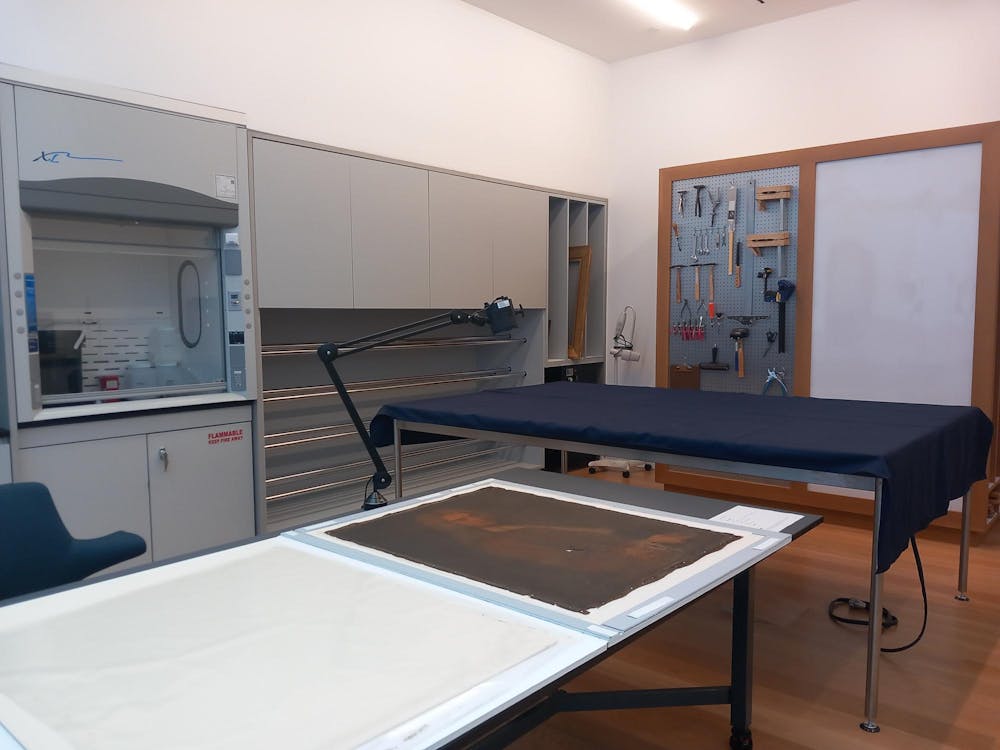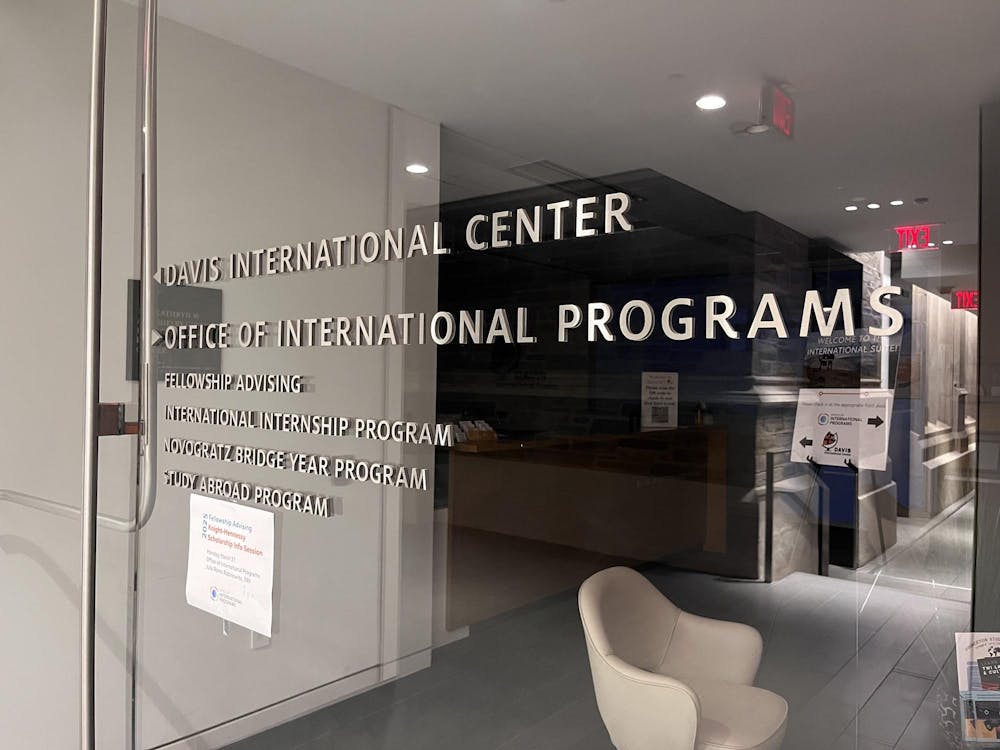For the last five years, Princeton University Art Museum conservators have been working out of a temporary building 15 minutes away from the University, overseeing the repair of over 300 objects and paintings.
Now, the conservation team has a new home in the brand new, two-story Paul & Heather Haaga Conservation Studios, equipped with suction tables, fume hoods, and an X-ray room in the new art museum building.
“Having more space and more room for specialized equipment and materials is going to really expand what we’re able to do internally as a department,” said Elena Torok, who works on object conservation, during a tour of the studio.
Bart Devolder, a conservator specializing in painting conservation, has been with the art museum since before the new space was designed. He worked closely with Samuel Anderson Architects to design a conservation studio with the right space and equipment to bring in conservators with different specializations.
The two conservators moved into the nearly pristine studios only recently, with conservation work yet to start.
“We’ve started to make sure that everything that’s here functions properly,” Devolder said.
A significant amount of space on the first floor of the conservation studios is dedicated to paper. This includes a suction table — a table with a humidity-controlled acrylic dome over it — as well as a giant sink fitted with taps for deionized and heated deionized water, and tables that are lit from below.
The other side of the room is primarily for object conservation, with a fume hood — a cupboard designed to extract vapors and fumes — for small objects and moveable tables for larger artifacts. There are also a number of “trunks,” which have a similar function to the fume hoods.

“We can sit at a table and work and then pull the solvent extraction over to us,” Torok said.
The first floor also includes a room for repair work “that’s loud or noisy,” according to Devolder, and is also equipped with a laser.
The second floor of the studios features a mixture of adjustable easels and microscopes, alongside suction and regular tables. The pyramid-shaped roof of the pavilion is visible from the inside, designed to only let in sunlight from the north. Devolder notes that painters and conservators in the northern hemisphere have preferred north light for centuries. It’s favored for being softer, more consistent, and colder than south light.
The second floor also includes a large suction table — custom-made and shipped from Australia — which heats up and will be used for painting conservation. Devolder plans to use it for Richard Phillips’s 1716 painting “Jonathan Belcher (1682–1757),” which awaits repair on a nearby table.

“This one would be really nice to now put on this table, do the suction which helps to flatten down,” he said. “The next thing would be to fix these tears … hopefully I can re-stretch it and then clean it.”
A lead-lined X-ray room on the same floor will allow conservators to examine the condition of artworks and identify forgeries, among other purposes.
The conservation studio shares the pavilion with one of the six object-study rooms in the museum, which are spaces designed for teaching and close study of objects. Arranged seminar-style, the object-study room has a wall of cabinets displaying a colorful assortment of objects: dyes, glues, and small artworks used for demonstrations.
While Princeton students won’t be able to do conservation work in the studio or the object-study room, the conservators plan to host lecture-style sessions and demonstrations explaining conservation processes while showcasing artworks.
Devolder and Torok hope to bring in summer interns from different conservation programs across the country. This is not currently an option available to Princeton students, although Torok is “hopeful that there will be chances in the future to work with undergraduates in an internship role. We’re just not quite there yet.”
With the new space almost fully operational, both conservators are looking forward to getting started properly.
“A lot of the objects that come through the studio come to us because they’ve been requested to go on view … so as all of that starts to roll forward, we’ll have new projects in the studio too,” Torok said.
The conservation studios will have visiting hours each month, with the next scheduled for Dec. 11 from 3 p.m. to 5 p.m.
Victoria Davies is a head News editor for the ‘Prince.’ She is from Plymouth, England and typically covers University operations and the Princeton University Art Museum.
Please send any corrections to corrections[at]dailyprincetonian.com.
Correction: A previous version of this piece said that curators have been working in the temporary studio off-campus. It was actually the conservators. The ‘Prince’ regrets this error.








